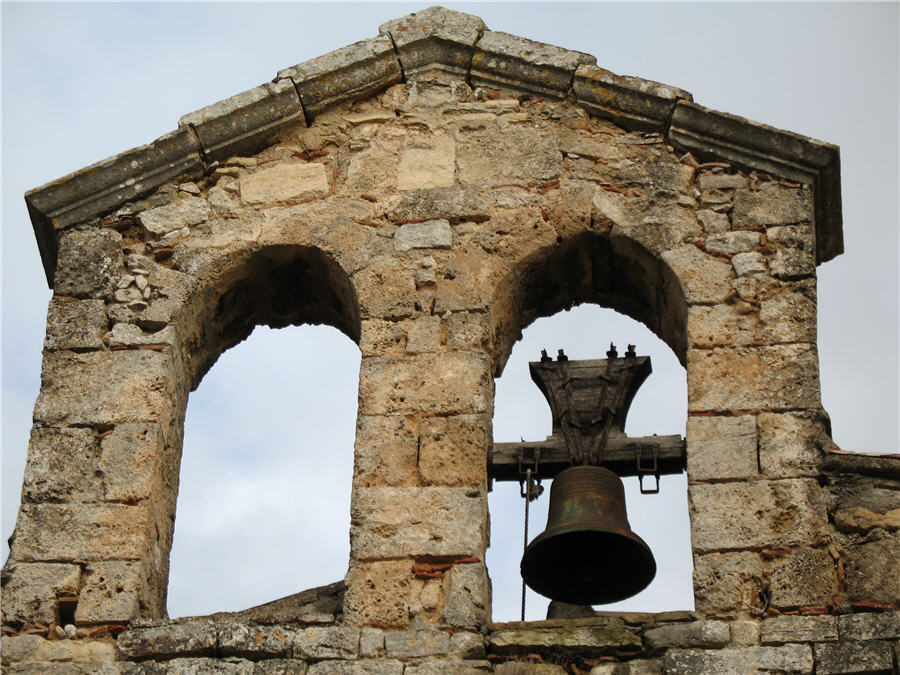
Centuries-old bells were stolen from church spires in three sleepy villages in Provence, a region in southeastern France, in July and the early part of this month, leaving the police scratching their heads.
“We have no leads whatsoever, but we believe this could have been done either by metal thieves or some bell collectors,” said Pierre Arpaia, deputy-prosecutor in Draguignan, who’s in charge of the case.
The churches in Esparron-de-Pallieres, Brue-Auriac and Ginasservis, in the Var district, were all located in isolated areas outside the village center, allowing the thieves to steal the heavy bells with impunity. The bell in Brue-Auriac dated from 1847 and one of the two stolen in Ginasservis was from 1737, before the French Revolution.
Coming just months after a fire destroyed the roof of the Notre-Dame Cathedral in Paris, the thefts of the church bells have highlighted France’s difficult task of preserving its religious landmarks, both big and small, in the face of falling budgets and dwindling church attendance, which is now among the lowest in the world.
The demand for metals and collectors seeking antiques are making the thousands of churchesdotting villages and towns across France easy targets for thieves.
Andre Rousselet, the mayor of Brue-Auriac, says the bell from his village church has probably been melted and the metal sold. In an interview this week with Agence France-Presse, Rousselet said that the metal from the bell may have fetched about 500 euros ($554).
For his part, Christian Ghinamo, the deputy-mayor of Esparron-de-Pallieres, doesn’t think metal thieves did it. “The bells that have been stolen are relatively light, meaning there’s not much metal content,” he said in an interview.
Also belying the metal-thieves theory is the drop in the price of tin and copper. Bronze, from which the bells were made, is an alloy of the two metals.
“In the run-up to the crisis, when metal prices soared, we saw metal thefts everywhere and anywhere”
Caroline Bain, Chief Commodities Economist at Capital Economics
In the years prior to the financial crisis in 2008, metal thefts were rampant as demand from China sent base metal prices to their highest levels. Church roofs and house gutters across the U.K. were being ripped off for lead and zinc, while the French national rail network was plagued by copper wire thefts.
“In the run-up to the crisis, when metal prices soared, we saw metal thefts everywhere and anywhere,” said Caroline Bain, Chief Commodities Economist at Capital Economics in London. With the global economy cooling, that frenzy had died down, she said.
During World War I, church bells were an obvious source of metal for ammunition and many ended up being melted and turned into bullets. But now, with no metal shortage and the process of extracting tin and copper from bronze being both complicated and expensive, “there’s no economic rationale for doing it simply to get the metal,” Frederic Rota, a bell maker at Fonderie de Cloches Obertino Charles in eastern France, said in an interview.
The bells are probably being sold to collectors, Rota said. His family-owned company, created in 1834, specializes in medium-sized bells for chapels and cows. “There’s a market for bells in France and elsewhere,” he said. “Some collectors go to great lengths to get them.”
Still, the market is tiny because “most church bells were blessed by a local bishop before they were installed, which render them inalienable,” said Nicolas Gueury, president of the European Conservatory for Tower Bells and Clocks, or CECH. “It’s illegal to sell them.”
Bells from before the French Revolution, which is the case for at least one of those stolen this summer, are rare. In 1793, revolutionaries ordered the destruction of nearly 100,000 bells across the country, making them precious, Gueury said.
“But they are tough to sell,” he said. “People are aware of the restrictions so I would say that vandals, little thugs unaware of low metal prices, did it.”
Still, as part of the preliminary investigation, the police are scrutinizing online retailers like France’s leboncoin.fr and eBay.fr, deputy-prosecutor Arpaia said. The French agency in charge of tracking stolen cultural goods trafficking, OCBC, has been alerted, he said.
Local gendarmes are also seeking to determine if the same perpetrators stole all the bells, Arpaia said. Whoever did it came well prepared for the deed, he said. They had to dislodge the bells from their towers and must have used hoisting equipment since they each weighed about 80 kilograms (176 pounds), Arpaia said.
Ghinamo, the deputy-mayor of Esparron-de-Pallieres, is convinced the thieves had planned out every detail.
“Our church was broken into during the night of July 13,” he said. “Nothing was stolen then, but this makes me think they were scouting, looking at how they could steal.” Thirty years ago, a statue of the Virgin Mary was stolen from the church. A decade later, burglars took away doors that had been there for at least five generations.
“They’ve never been found,” Ghinamo said.
(By Geraldine Amiel, with assistance from Eddie van der Walt)
Comments